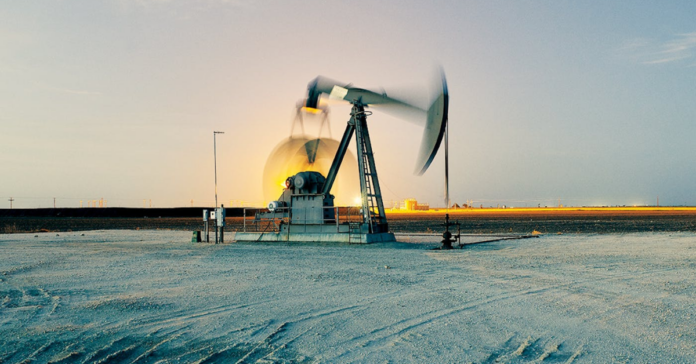Top New Mexico education officials and business experts observing the just-concluded legislative session in Santa Fe say that while the oil and gas industry is strong, it could face significant challenges in coming years that threaten the state’s budget and a boom in student education funding.
During the 60-day session, bills passed to transition the state to a low-carbon electricity future and empowering the state’s Conservation Division to punish operators.
A proposed four-year moratorium on hydraulic fracturing failed to move out of the Senate Conservation Committee in late February.
But both educators and business leaders say issues raised during the session that could reappear in 2020 pose a substantial risk in upsetting the robust revenues they regard as instrumental in lifting the state’s education system and providing revenues for much-needed infrastructure investment.
They caution against policymakers disrupting the booming oil and gas production on New Mexico’s side of the popular Permian Basin and driving investment and revenue across the border on to Texas’ side of the basin.
This is the second in a four-part Western Wire series. You can read the first part here.
Permian Basin, Future Legislation A Concern
Steve Vierck, President & CEO of the Economic Development Corporation of Lea County (EDCLC), told Western Wire that the 2019 session contained a great deal of uncertainty in his corner of the state.
“Among the biggest concerns of oil and gas companies with operations within Lea County have been the anti-fracking bill, environmental review act, and the critical need for adequate funding for needed highway improvements,” Vierck said.
Lea County, New Mexico shares its southern and eastern borders with Texas and produces a tremendous amount of oil. According to 2017 data from the U.S. Energy Information Administration, if Lea County was its own state, it would rank 7th in the U.S., ahead of the entire state of Wyoming or Louisiana, and right behind Colorado.
Neighboring Eddy County, also part of the booming Permian Basin, would rank 9th. Combined, the two counties would come out fifth overall, behind only Texas, North Dakota, Alaska, and Oklahoma.
Vierck’s 2018 analysis showed that 91 percent of the state’s oil production came from Lea and Eddy counties, and the counties’ dominance continued throughout 2018 as the percentage of oil produced rose to 96 percent for the state, propelling New Mexico to fifth in the nation in overall oil and gas production.
As a result residents, workers, and businesses in the southeast part of the state naturally take the conversation in Santa Fe very seriously. That includes a bill that would have put drilling on hold for years.
Senate Bill 459 would have called for New Mexico’s Department of Energy and Natural Resources to “halt” new permits for hydraulic fracturing until 2023, but earned considerable pushback. The bill floundered in committee.
Vierck said that while the biggest concerns did not go very far, “We thought that would be the case as the fracking ban had a $3.5 billion fiscal impact and would be suicidal to the state’s finances which most legislators understand,” he was hesitant to go further. “But you never know and we didn’t want to take it for granted,” he added.
However, just the appearance and introduction of the bill have sent shockwaves through the industry, according to Vierck.
Any hint of uncertainty, including a substantial regulatory change conversation beginning this year, could upset the balance that has driven up production and filled the state’s coffers with more than a billion dollars for K-12 and higher education.
In 2018, Bureau of Land Management oil and gas lease sales on federal lands alone contributed more than $1 billion to New Mexico’s income.
“Even though that proposed legislation didn’t go anywhere, there has been some adverse impact from just the message that [bill] sent. We had three meetings with oilfield services companies earlier in the week and two of the three were very concerned about the proposed legislation,” he said.
“One executive said it was ‘scary’ and the facilities manager of the other oilfield firm company told us that ‘some customers are holding off on projects’ until they can see what happens,” whether with the proposed legislation or the conversation it creates, according to Vierck, as the specter of resurrected bills in future sessions will continue to tamper interest.
Negative policy actions in New Mexico, he said, could drive operators quickly and easily across the border into Texas, as the Permian Basin and production straddles but does not recognize political borders.
“Some companies’ project capital investment budgets are for the Permian Basin as a whole, so some of the capital investment can shift to either side of the New Mexico-Texas border depending upon the situation,” he said. “We see that a lot here since Texas borders Lea County on both the east and south.”
In late 2018 U.S. Geological Survey estimated that reserves within the Delaware portion of the Permian Basin contained more than 46 billion barrels of oil and 280 trillion cubic feet of natural gas, the largest continuous potential in the country. That’s enough for 49 years of production at current levels.
But not all political observers are convinced this year’s session has put uncertainty concerns to bed after the more troubling bills, like the proposed four-year fracking stop, went nowhere.
Paul Gessing, President of the free-market Rio Grande Foundation, said the rhetoric surrounding the session was more volatile than the legislative outcomes, but he didn’t know if the industry could feel “safe.”
“With the ascendance of the progressives and their environmentalist allies, was it simply the fact they were willing to bide their time given the major debate about energy at the power plants and what that means?” Gessing told Western Wire, referring to the Energy Transition Act. That victory might have sucked up some of the attention the fracking ban would have consumed, but it will likely not stop calls for putting stricter regulations or complete bans on oil and gas development any time soon.
“Rising energy prices are going to have an impact on oil and gas,” Gessing added, but likely years from now. “The bigger concern is the political one. Without that issue for environmentalists to fixate on in future legislative sessions, they’re going to want . . . they’re going to keep asking for more, and the progressives are inclined to give them more,” he said.
Gessing added that it wasn’t clear what the endgame for anti-industry activists will be—their messaging is all over the map—but acknowledged the growing tension between the leadership in the Democratic majority at the Capitol and their anti-oil and gas constituents, likening it to a clash between icebergs.
That conflict, between the money the industry pours into state coffers and calls for environmental regulations, currently favors those who want to tap the revenue stream.
For now.
“If something happens, say a steep and prolonged downturn in oil and gas revenues, I think that could be the proverbial ‘blood in the water’ for the environmentalists to really go after that industry legislatively,” he said. But, “with the industry robust, and showing no signs, quite frankly, of slowing down in terms of revenue, it’s going to be very tough for the leadership to want to forego that no matter how many phone calls or emails they receive,” Gessing added, saying that the situation in New Mexico was different from neighboring states with oil and gas issues.

